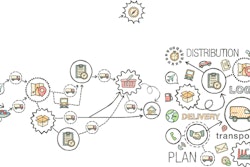
Like travel, consumers earn a wider variety of paths to purchase as infrastructural capabilities increase. Instead of planes, trains and automobiles, today’s online shoppers have numerous sales channels to choose from. The majority is making use of multiple channels for even just a single order.
No matter how they choose to get there, all consumers require the same map to navigate where they're going. In the case of omnichannel sales, this means having clear, consistent and complete product content across every single channel. Why? Because no matter the mode of transportation or the sales channel chosen, the destination remains the same: seamless purchasing. This is difficult to achieve across channels when product information is riddled with inaccuracies, low quality or differs from one channel to the next.
As supply chains continue to grow in complexity, the flow of data across channels and networks can make or break how well manufacturers and retailers engage consumers.
Not convinced?
Here are two reasons why facilitating a streamlined, frictionless flow of product content is mission-critical for today’s retailers:
1. Consumers Demand Consistent Product Information
Today’s shoppers are accustomed to a 360-degree shopping experience. Seventy percent of consumers use three or more channels when researching a purchase and 90 percent of customers expect consistent interactions across channels. The desire for seamless transitions and transparency into product information are on the rise as consumers become more conscious of what they’re purchasing.
Retailers must match this complex path to purchase with accurate and consistent product content across all channels. Companies that cannot facilitate the easy exchange of product information from one channel to the next put themselves at a distinct disadvantage from competitors that can. In order to preserve brand reputation and customer loyalty, retailers must prioritize transparency and agility as they educate and engage consumers across all channels.
2. Streamlined Product Information Promotes Operational Efficiencies and Growth
In addition to better engaging and converting consumers, consistent and readily available product content can improve internal retail operations. While many retailers have siloed individual online channels and do a poor job of transitioning key information along the supply chain, creating a single repository for product information makes it easier to share product information between departments and efforts.
Facilitating streamlined product content serves as a solid foundation upon which employees can pursue other company endeavors. For example, social media and sales teams can leverage the same product information and then mold it to meet the specific needs of their particular channels. This ensures that what a consumer sees from one channel to the next, such as product price or availability, remains the same. Trustworthy product content also reduces the time and effort it takes for departments to upload accurate and complete product information online.
Bottom-line efforts, such as marketing campaigns and social engagement, are the extra touch retailers need to develop lifelong customer loyalty. However, they can prove counterproductive if the product information presented on one channel differs from what shoppers find elsewhere. Eliminating data errors and sharing product logistics across all departments are major cost savers, and reinforce a collaborative commerce environment focused on complementary efforts along the entire supply chain.
Mastering content aggregation and distribution is not an easy task, however, it’s one that retailers cannot shy away from in today’s increasingly digital-first world.
The best way to enrich and maintain product information is through a cloud-based service capable of housing all product content needs in one place. Retailers can leverage this database to standardize content across all global trading communities, and maintain and keep product information up to date. Manufacturers, which are being forced to act more like retailers under today’s dropship commerce model, can do the same within their own global-trading communities and ensure every step of the supply chain makes use of the same product content.
Product content, from digital assets to insights, must be organized in a way that facilities easy exchange across all of today’s sales channels. No matter how consumers choose to get to purchase, their journey should be smooth and free of content potholes. A single bump in the road all but guarantees a lifetime of consumer distrust for retailers.














